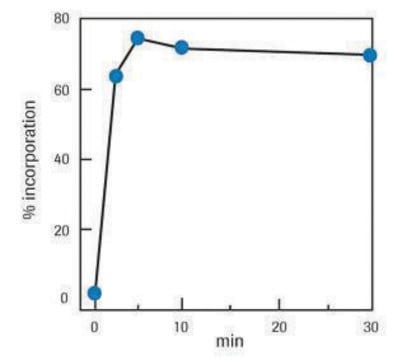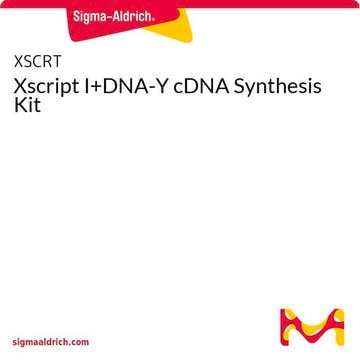11745824910
Roche
Biotin-Nick Translation Mix
suitable for hybridization, solution, sufficient for 40 labeling reactions, pkg of 160 μL
Sinónimos:
nick translation
Seleccione un Tamaño
631,00 €
Seleccione un Tamaño
About This Item
631,00 €
Productos recomendados
Formulario
solution
Nivel de calidad
uso
sufficient for 40 labeling reactions
envase
pkg of 160 μL
fabricante / nombre comercial
Roche
técnicas
hybridization: suitable
temp. de almacenamiento
−20°C
Descripción general
Nick translation utilizes a combination of DNase and DNA Polymerase to nick one strand of the DNA helix, then incorporates labeled nucleotides as the polymerase examines, or "proofreads" the nicked site. The molar ratio of Biotin-16-dUTP to dTTP is adjusted to ensure that every 20th to 25th nucleotide in the newly synthesized DNA is modified with biotin. This density of haptens in the DNA yields the highest sensitivity in the immunological detection reaction.
Large plasmids, cosmids, and PCR fragments are all regularly used with this method, and the DNA can be linearized or supercoiled. Individual templates produce consistent results in the standard 90-minutes reaction, and result in an average probe length of 200 base pairs up to 500 base pairs.
Especificidad
Aplicación
Note: The mix can also be used for filter hybridization techniques, however, for highly sensitive filter hybridization probes, we recommend that you use Biotin-High Prime from Roche Applied Science.
For nonradioactive labeling of in situ probes with other haptens, Roche Applied Science offers the DIG-Nick Translation Mix or the Nick Translation Mix.
Calidad
Principio
Forma física
Nota de preparación
Sample Materials
Supercoiled and linearized plasmid DNA
Supercoiled and linearized cosmid DNA
Purified PCR products
Note: Denaturing of the template before nick translation is not required.
Otras notas
Código de clase de almacenamiento
12 - Non Combustible Liquids
Clase de riesgo para el agua (WGK)
WGK 1
Punto de inflamabilidad (°F)
No data available
Punto de inflamabilidad (°C)
No data available
Elija entre una de las versiones más recientes:
¿Ya tiene este producto?
Encuentre la documentación para los productos que ha comprado recientemente en la Biblioteca de documentos.
Los clientes también vieron
Nuestro equipo de científicos tiene experiencia en todas las áreas de investigación: Ciencias de la vida, Ciencia de los materiales, Síntesis química, Cromatografía, Analítica y muchas otras.
Póngase en contacto con el Servicio técnico









